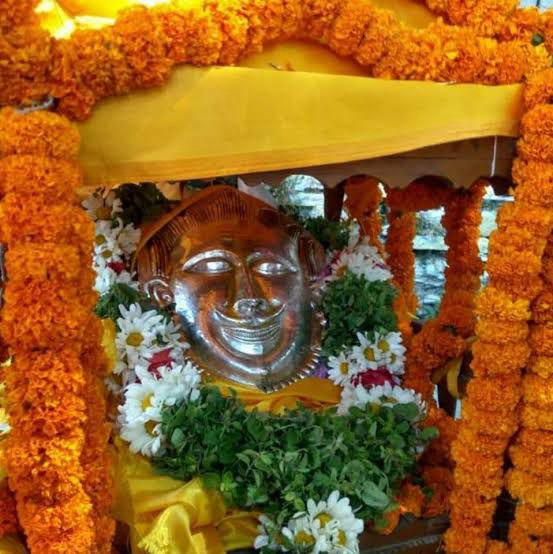Ghantakarna’s Worship in Odisha & Uttarkhanda
By Lokanath Mishra
In the state of Odisha, Ghantakarna is revered and worshipped on the day of Raksha Panchami, a significant festival in the Hindu calendar. On this day, devotees offer prayers and worship Ghantakarna, seeking his blessings and protection.
A Unique Tradition
The worship of Ghantakarna in Odisha is a unique tradition that highlights the diversity of cultural and spiritual practices in the region. Despite his origins as a demon, Ghantakarna has been assimilated into the local folklore and is worshipped with great devotion.
Raksha Panchami Celebrations
During Raksha Panchami, devotees in Odisha observe special rituals and ceremonies to honor Ghantakarna. The festival is a celebration of protection and blessings, and Ghantakarna’s worship is an integral part of the festivities.
The worship of Ghantakarna in Odisha reflects the rich cultural heritage of the region, where mythology and folklore are deeply intertwined with everyday life. The story of Ghantakarna, a demon turned devotee, serves as a reminder of the power of redemption and the importance of spiritual growth.
Cultural Significance
As we explore the diverse traditions and practices of India, the worship of Ghantakarna in Odisha stands out as a fascinating example of the complex and multifaceted nature of Hindu mythology and culture.
The Story of Ghantakarna: A Demon Devotee
In the revered Badrinath Temple, a statue of Ghantakarna stands guard as the door-keeper, a testament to his transformation from a ferocious demon to a devoted servant of Lord Vishnu. Ghantakarna’s story is a fascinating tale of devotion, redemption, and the power of divine mercy.
The Demon with a Difference
Ghantakarna, a demon with a penchant for violence and destruction, wore bells on his ears to avoid hearing the name of Vishnu, whom he despised. Despite his hatred for Vishnu, he was a devout follower of Shiva and spent thousands of years worshipping and meditating on him. His devotion eventually caught the attention of Shiva, who appeared to him and offered to grant him a boon.
The Boon of Liberation
Ghantakarna, unlike many others who would have asked for wealth or power, requested liberation from the cycle of birth and death. This ultimate goal of Eastern spirituality is not easily attainable, and Shiva, while pleased with Ghantakarna’s devotion, was hesitant to grant him this boon due to his hatred for Vishnu. Instead, Shiva suggested that Ghantakarna seek the shelter of Lord Narayan, who could grant him liberation.
The Path to Redemption
Ghantakarna, filled with remorse and a desire for redemption, set out on a journey to find Lord Krishna, who was an incarnation of Vishnu. His journey took him to Dwarka and then to Badrikashram, where he finally encountered Lord Krishna. Despite his past hatred, Ghantakarna’s devotion and chanting of Lord Narayan’s name touched Krishna’s heart, and he appeared to him in his divine form.
A New Path
Krishna’s mercy and blessings transformed Ghantakarna, and he abandoned his violent ways. He became the door-keeper of the Badrinath Temple and, after his death, attained heaven. Ghantakarna’s story serves as a reminder of the power of devotion and the mercy of the divine. Despite his flaws and hatred, Ghantakarna’s sincere devotion ultimately led him to redemption and a life of service.
The statue of Ghantakarna at the Badrinath Temple stands as a testament to the transformative power of devotion and the divine mercy that is available to all, regardless of their past. His story inspires us to reflect on our own journey and the potential for redemption and growth that lies within us.

